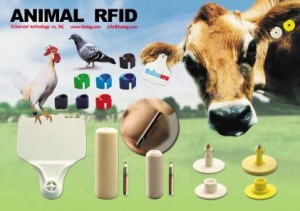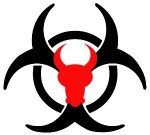Daryll E. Ray and the Agricultural Policy Analysis Center, University of Tennessee, Knoxville, TN
July 24, 2009
Food safety has been getting a lot of attention lately. In response to the peanut butter, pistachio, and toll house cookie recalls, the House Energy and Safety Committee has approved the Food Safety Enforcement Act of 2009 to strengthen and expand the US Food and Drug Administration’s (FDA) role in food safety and inspection. To gauge the response of the agricultural community, the House Agriculture Committee held a hearing on this legislation.
At the other end of Pennsylvania Avenue, a White House Food Safety Group was formed by the Obama administration. In July 2009, the Working Group recommended “a new, public health-focused approach to food safety based on three core principles: (1) prioritizing prevention; (2) strengthening surveillance and enforcement; and (3) improving response and recovery”
(http://www.foodsafetyworkinggroup.gov/FSWG_Fact_Sheet.pdf).
In all this, major-crop and livestock farmers are worried that the move toward increased emphasis on food safety will lead to the FDA inspection of farms as part of its role in protecting the integrity of the food ingredients that are produced by farmers. Many involved in beef production are resistant to an animal identification system that would allow traceback to the farm-level.
At the same time, the meat industry, having freed itself from a government-directed inspection through the use of Hazard Analysis and Critical Control Point program (HACCP), wants to prevent a move back to a greater government involvement in the inspection of meat and meat products.
When considering issues of major importance to a sector—which this one definitely is in the case of agriculture—the rhetoric sometimes out-distances the the reality of the arguments made and fears generated.
In the case of E. coli in beef, there is nothing that cattlemen can or cannot do that will materially affect the probability of E. coli showing up in your hamburger. There is some evidence that taking cattle off the feedlot for a period of time and putting them on pasture prior to slaughter reduces the level but does not eliminate the presence of E. coli and therefore its potential for contamination. So there is no reason for the FDA to use valuable resources to visit cattle ranches or feeding operations as part of “beefing-up” prevention of E. coli contamination from beef.
Since what happens on ranches and feedlots has no effect on whether beef ultimately becomes contaminated with E. coli, traceback to production agriculture—that is, an animal identification system—is not needed to protect consumers from E. coli.
That is not to say that an animal ID program is, or is not, appropriate for other reasons. Recent arguments for animal traceback are primarily concerned with bovine spongiform encephalopathy (Mad Cow disease). While that may be an important issue, it is unrelated to the E. coli discussion.
Traceback is required, of course, but it is MEAT traceback that is needed, not animal traceback.
Meat traceback is needed because E. coli O157:H7 grows in the gut of beef animals, the food safety issue concerns the prevention of the contamination of slaughtered meat from sources like intestines and hides.
When E. coli O157:H7 is found in ground beef or on beef muscle meat surfaces, the problem is one that originates at the packing plant. Since the institution of the HACCP system in meat inspection, the USDA has focused its enforcement at downline facilities that process boxed beef into hamburger and resisted tracing the contamination back to the packing plant that produced the boxed beef.
The USDA has done this despite the knowledge that a processing facility that does no slaughtering lacks a source of E. coli O157:H7. The most likely source of the E. coli is on the surface of meat that came in from the slaughterhouse, thus the need for meat traceback.
The rhetoric of those speaking for meat packers and processors tend to steer attention away from the central issue. James Hodges of the American Meat Institute Foundation makes statements like “No outbreaks of E. coli O157:H7 have been linked to whole muscle cuts like steaks and roasts.” Similarly, the North American Meat Processors Association (NAMP) sent out a 2008 NewsFax release saying “NAMP knows of no illness that has resulted from the consumption of intact beef product.”
The issue is not the consumption of steaks, roasts, and intact beef product. Everyone acknowledges that heating the outside of those products to 160 degrees kills E. coli 0157:H7. Rather the problem comes from the fact that the presence of E. coli O157:H7 on the surface of primals is not considered an adulterant. That presence raises the opportunity for cross contamination with other foods or the incorporation of E. coli present on the surface of intact cuts into ground beef.
Cutting through the rhetoric, it seems clear that the USDA can significantly reduce the number of E. coli illnesses by declaring E. coli O157:H7 on the surface of primals to be a contaminant that must be eliminated as part of the slaughtering process and by instituting a meat traceback system that will trace contaminated ground beef back to the packing plant that provided it.
Daryll E. Ray holds the Blasingame Chair of Excellence in Agricultural Policy, Institute of Agriculture, University of Tennessee, and is the Director of UT’s Agricultural Policy Analysis Center (APAC). Daryll Ray’s column is written with the research and assistance of Harwood D. Schaffer, Research Associate with APAC.
agpolicy.org

 A new food safety bill is on the fast track in Congress-HR 2749, the Food Safety Enhancement Act of 2009. The bill needs to be stopped.
A new food safety bill is on the fast track in Congress-HR 2749, the Food Safety Enhancement Act of 2009. The bill needs to be stopped.

 One of the strongest speakers,
One of the strongest speakers,  The USDA has a
The USDA has a